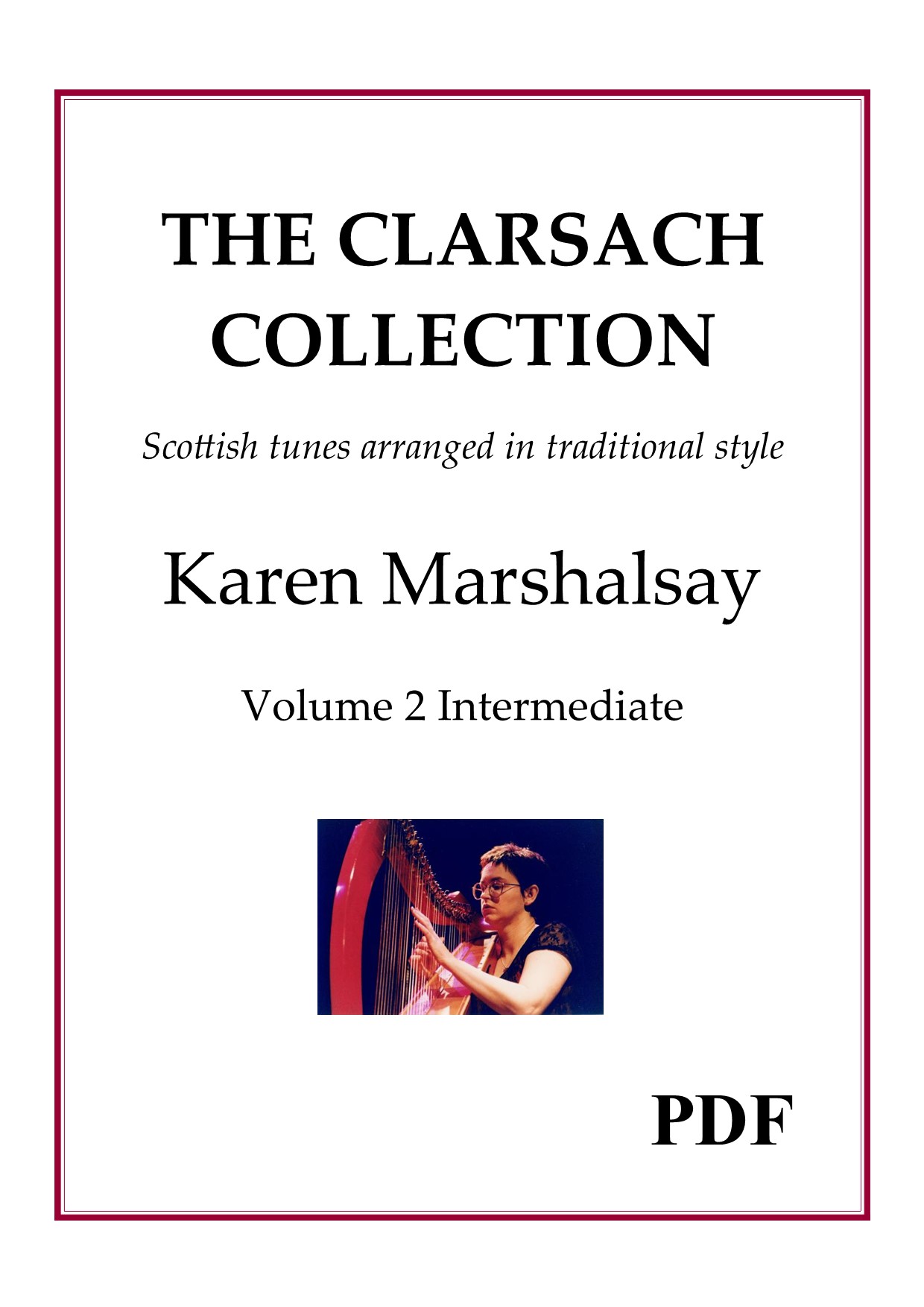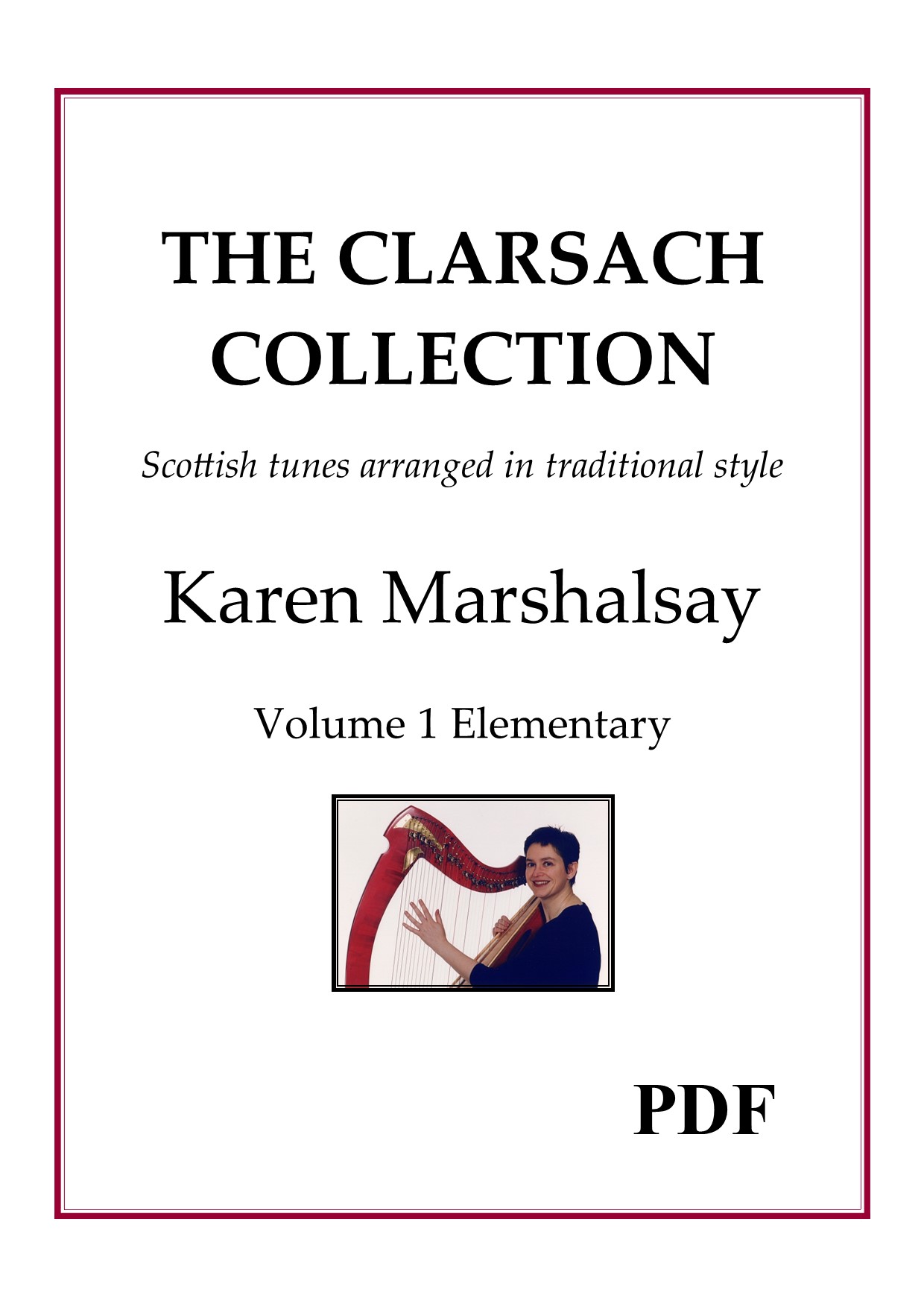The Clarsach Collection Vol 2 Intermediate £10
On Sale
£999.99
Select your preferred format
Volume 2 contains 17 traditional and new Scottish tunes arranged for gut-strung harp to approximately Grades 4-6 standard, with fingerings given
CONTENTS
These are some of my favourite Scottish tunes, along with a few of my own compositions. I have added some fingerings and grace notes to give an idea of how I would play them, though of course, in traditional playing you don’t have to stick rigidly to the written arrangement. Indeed some variation in terms of decoration and accompaniment would be expected of a good trad player. Try these fingerings out, even if they seem a bit strange to you, as they help with the rhythm and feel of the pieces. Afterwards, if you’d rather change them, then do what suits you.
I’ve gathered these tunes into my repertoire over quite a few years and have learned them from many different sources, some from folk I’ve played with and others from folk I’ve taught! Thanks to all those in both categories for the music and the fun.
Quite a few of these tunes are dance tunes, but remember that they don’t need to be played all that fast – the rhythm and phrasing are much more important than mere speed –so never try to play any faster than you can comfortably manage.
Karen Marshalsay
Glasgow, 2010
CONTENTS
- A Scots Tune Air
- MacKinnon’s Brook Strathspey
- The Kilt is My Delight Reel
- An Drochaid Chlùiteach Reel
- Cuttie’s Wedding Strathspey
- The Battle of the Somme Retreat March
- Da Day Dawn Slow Air
- The Rhymer’s Reel / The Elfen Queen/ The Fairy Piper’s Jig (from Thomas the Rhymer)
- The Boy’s Lament for his Dragon 2/4 March
- The Red Haired Girl of Tulloch Strathspey
- Snow on the Hills Slow Reel
- Tracy’s Wriggly Jig Jig
- The Twenty-Fifth String Slow Air
- St Anne’s Reel Reel
- Willafjord Reel
These are some of my favourite Scottish tunes, along with a few of my own compositions. I have added some fingerings and grace notes to give an idea of how I would play them, though of course, in traditional playing you don’t have to stick rigidly to the written arrangement. Indeed some variation in terms of decoration and accompaniment would be expected of a good trad player. Try these fingerings out, even if they seem a bit strange to you, as they help with the rhythm and feel of the pieces. Afterwards, if you’d rather change them, then do what suits you.
I’ve gathered these tunes into my repertoire over quite a few years and have learned them from many different sources, some from folk I’ve played with and others from folk I’ve taught! Thanks to all those in both categories for the music and the fun.
Quite a few of these tunes are dance tunes, but remember that they don’t need to be played all that fast – the rhythm and phrasing are much more important than mere speed –so never try to play any faster than you can comfortably manage.
Karen Marshalsay
Glasgow, 2010














